
تاريخ الفيزياء

علماء الفيزياء


الفيزياء الكلاسيكية

الميكانيك

الديناميكا الحرارية


الكهربائية والمغناطيسية

الكهربائية

المغناطيسية

الكهرومغناطيسية


علم البصريات

تاريخ علم البصريات

الضوء

مواضيع عامة في علم البصريات

الصوت


الفيزياء الحديثة


النظرية النسبية

النظرية النسبية الخاصة

النظرية النسبية العامة

مواضيع عامة في النظرية النسبية

ميكانيكا الكم

الفيزياء الذرية

الفيزياء الجزيئية


الفيزياء النووية

مواضيع عامة في الفيزياء النووية

النشاط الاشعاعي


فيزياء الحالة الصلبة

الموصلات

أشباه الموصلات

العوازل

مواضيع عامة في الفيزياء الصلبة

فيزياء الجوامد


الليزر

أنواع الليزر

بعض تطبيقات الليزر

مواضيع عامة في الليزر


علم الفلك

تاريخ وعلماء علم الفلك

الثقوب السوداء


المجموعة الشمسية

الشمس

كوكب عطارد

كوكب الزهرة

كوكب الأرض

كوكب المريخ

كوكب المشتري

كوكب زحل

كوكب أورانوس

كوكب نبتون

كوكب بلوتو

القمر

كواكب ومواضيع اخرى

مواضيع عامة في علم الفلك

النجوم

البلازما

الألكترونيات

خواص المادة


الطاقة البديلة

الطاقة الشمسية

مواضيع عامة في الطاقة البديلة

المد والجزر

فيزياء الجسيمات


الفيزياء والعلوم الأخرى

الفيزياء الكيميائية

الفيزياء الرياضية

الفيزياء الحيوية

الفيزياء العامة


مواضيع عامة في الفيزياء

تجارب فيزيائية

مصطلحات وتعاريف فيزيائية

وحدات القياس الفيزيائية

طرائف الفيزياء

مواضيع اخرى
Paramagnetism at High Temperature
المؤلف:
Sidney B. Cahn, Gerald D. Mahan And Boris E. Nadgorny
المصدر:
A GUIDE TO PHYSICS PROBLEMS
الجزء والصفحة:
part 2 , p 40
30-8-2016
1483
Paramagnetism at High Temperature
a) Show that for a system with a discrete, finite energy spectrum εn, the specific heat per particle at high temperatures (τ >> εn for all n) is
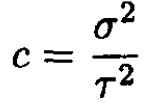
where σ is the spectrum variance

b) Use the result of (a) to derive the high-temperature specific heat for a paramagnetic solid treated both classically and quantum mechanically.
c) Compare your quantum mechanical result J = 1/2 for with the exact formula for c.
SOLUTION
a) The specific heat c of a system that has N energy states is given by
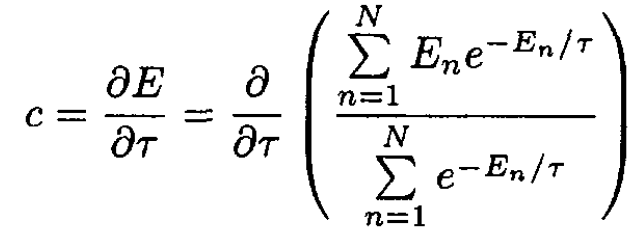 (1)
(1)
Using 1/τ = β, we may rewrite c:
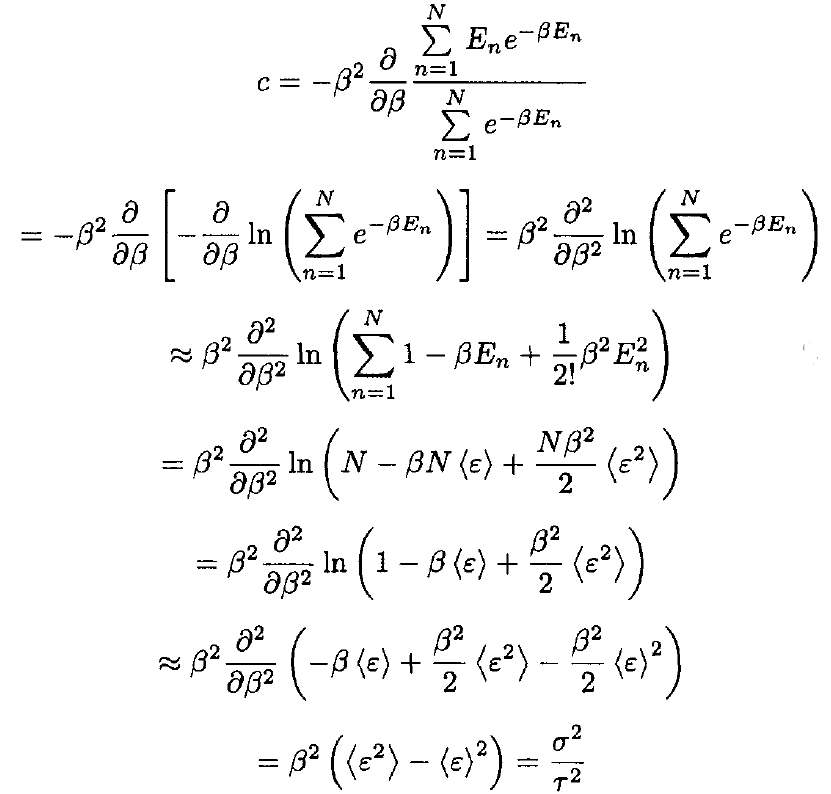 (2)
(2)
where we have used In (1 + x) ≈ x – x2/2. Note that, in general, the parameter βEn is not small (since it is proportional to the number of particles), but, subsequently, we obtain another parameter βε << 1.
b) For a classical paramagnetic solid:

so

and we have
 (3)
(3)
where dz/2 is the probability density. Therefore,
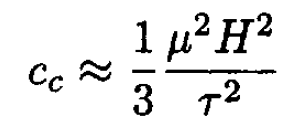 (4)
(4)
For the quantum mechanical case, ⟨ε⟩ = 0; there is an equidistant energy spectrum: Em = -gμBHm and
 (5)
(5)
To calculate 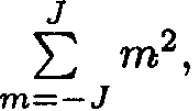 we can use the following trick (assuming J integer):
we can use the following trick (assuming J integer):
 (6)
(6)
From (6) we have
 (7)
(7)
With the familiar sum

we arrive at
 (8)
(8)
We wish to perform the sum from –J to J, so

and (5) gives
 (9)
(9)
 (10)
(10)
c) For J = 1/2,

and
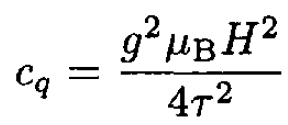 (11)
(11)
For J = 1/2:
 (12)
(12)
where y = gμBH. We then find
 (13)
(13)
For τ → ∞, β → 0,

which coincides with (11).
 الاكثر قراءة في مواضيع اخرى
الاكثر قراءة في مواضيع اخرى
 اخر الاخبار
اخر الاخبار
اخبار العتبة العباسية المقدسة

الآخبار الصحية















 قسم الشؤون الفكرية يصدر كتاباً يوثق تاريخ السدانة في العتبة العباسية المقدسة
قسم الشؤون الفكرية يصدر كتاباً يوثق تاريخ السدانة في العتبة العباسية المقدسة "المهمة".. إصدار قصصي يوثّق القصص الفائزة في مسابقة فتوى الدفاع المقدسة للقصة القصيرة
"المهمة".. إصدار قصصي يوثّق القصص الفائزة في مسابقة فتوى الدفاع المقدسة للقصة القصيرة (نوافذ).. إصدار أدبي يوثق القصص الفائزة في مسابقة الإمام العسكري (عليه السلام)
(نوافذ).. إصدار أدبي يوثق القصص الفائزة في مسابقة الإمام العسكري (عليه السلام)


















